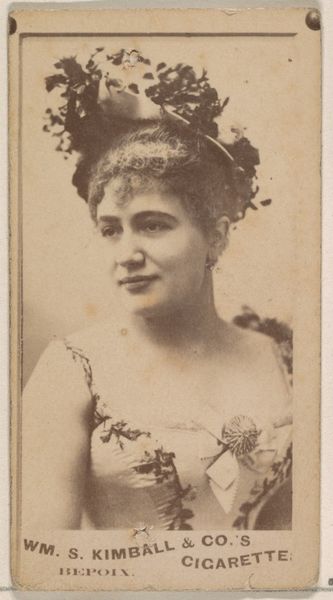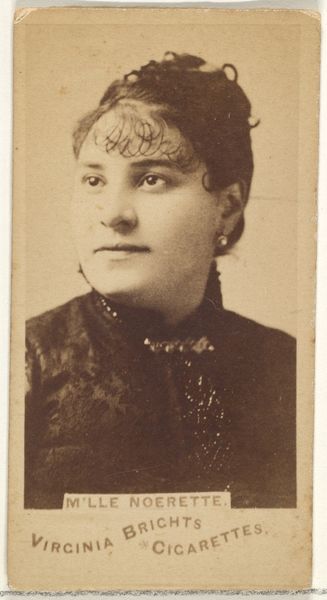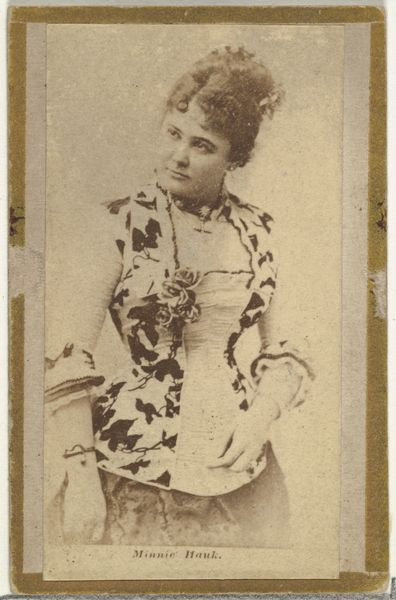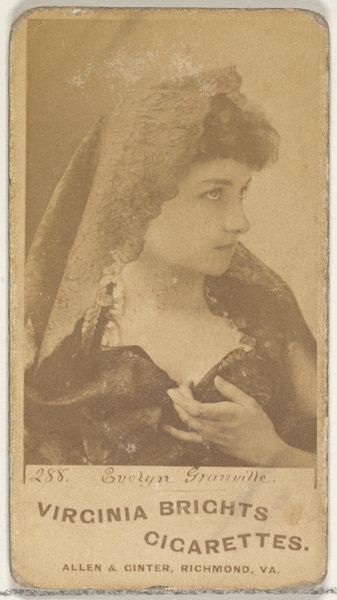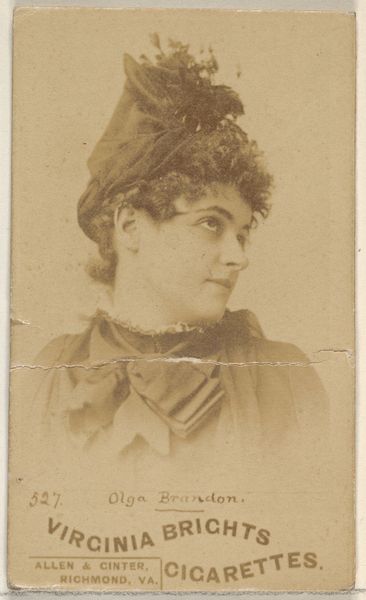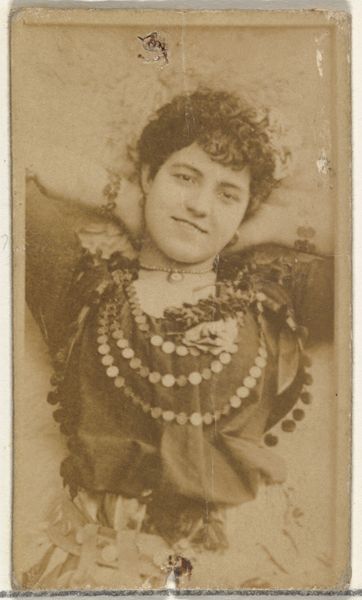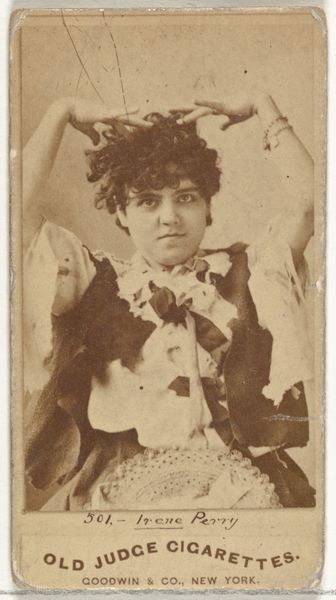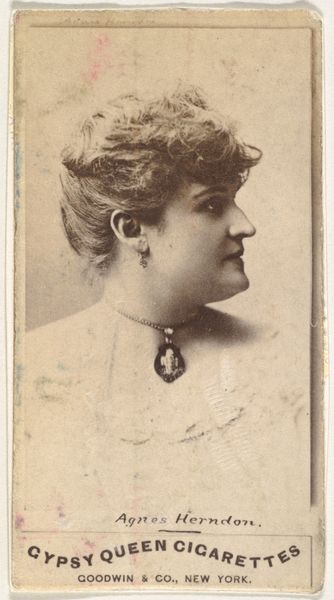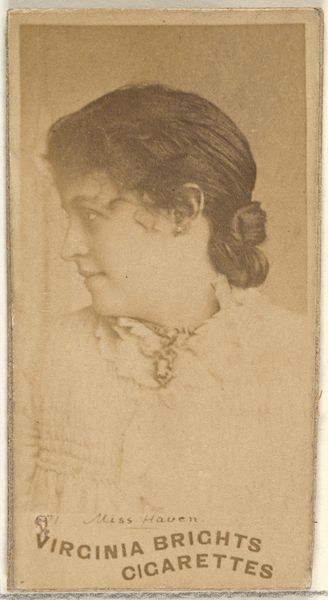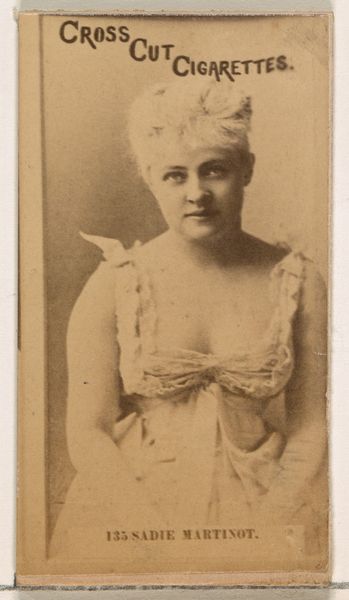
Card Number 715, Cecilia Bouffi, from the Actors and Actresses series (N145-3) issued by Duke Sons & Co. to promote Cross Cut Cigarettes 1880s
0:00
0:00
print, photography
#
portrait
# print
#
photography
Dimensions: Sheet: 2 11/16 × 1 3/8 in. (6.8 × 3.5 cm)
Copyright: Public Domain
Editor: So, this is Card Number 715 from the Actors and Actresses series, featuring Cecilia Bouffi. It's a collotype print from the 1880s, published by W. Duke, Sons & Co. as a cigarette card. I’m immediately struck by how…ordinary it seems? Given the context, what does it mean to elevate an image like this? Curator: It’s a compelling question. Consider the political economy of image-making at this time. Mass production intertwined with leisure, smoking, and celebrity culture creates a fascinating dialogue. These cards, seemingly innocuous, become sites of negotiation for identity, class, and even gender roles. What does it mean to consume an image of a female actress, on a product primarily marketed to men? Editor: Hmm, I hadn't thought of it that way. Was there a deliberate intent in choosing particular actresses, or was it more about conforming to popular tastes of the era? Curator: Absolutely deliberate! Bouffi, while perhaps not a household name today, represented a specific type of feminine ideal – think about her attire, her gaze. And that typeface at the bottom with “Cross-cut cigarettes/ Iare the best,” also influences meaning. The distribution and consumption of her image in this context also promoted very specific consumer values tied up with empire and colonialism. We need to be attentive to these intersectional power dynamics. What do you notice about the composition? Editor: Now that you mention it, there's a somewhat Orientalist feel to her wrap. That, combined with the commercial messaging, is very telling about the pervasiveness of cultural appropriation at the time. Thanks. Curator: Precisely. We’re constantly negotiating visual culture and need to remain critical, challenging these seemingly straightforward depictions. It is only by considering historical, social, and political contexts that we arrive at an enriching analysis of a popular artwork, like this trading card.
Comments
No comments
Be the first to comment and join the conversation on the ultimate creative platform.
